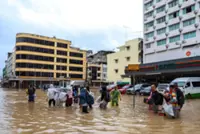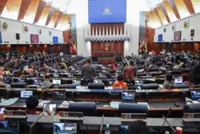When the sun sets in Batu Ferringhi, the sidewalks of Penang’s main beach destination come alive with a cacophony of activity at the popular night market. Vendors set up stalls along Jalan Batu Ferringhi and sell a variety of things.
The items on sale range from home decoration items to fresh fruits and fake designer handbags, to T-shirts featuring Armenian Street’s iconic murals.
Already a subscriber? Log in
Save 30% OFF The Star Digital Access
Cancel anytime. Ad-free. Unlimited access with perks.
Related stories:
- Getting Malaysians to see Malaysia from a tourist's perspective
- What can Malaysians see, do and eat in Kelantan and Terengganu?
- Malaysian couples plan more intimate post-pandemic domestic destination weddings
- Time to focus on Malaysian healthcare travellers amid the pandemic
- Malaysian gets to live rent-free anywhere in the world for a year with family
Follow us on our official WhatsApp channel for breaking news alerts and key updates!
Thank you for your report!





